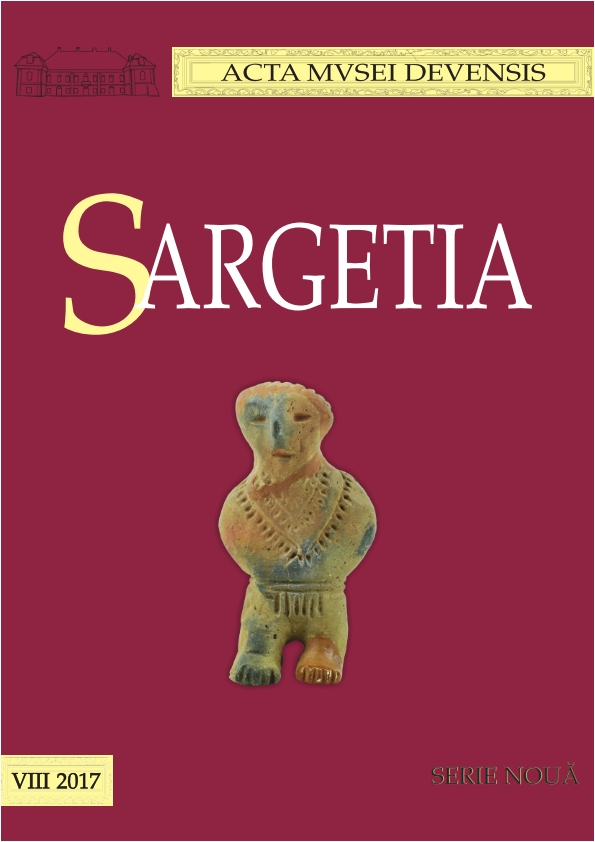Reprezentări antropomorfe şi zoomorfe neolitice şi eneolitice descoperite în judeţul Hunedoara
Neolithic and Eneolithic Anthropomorphic and Zoomorphic Representations Found in Hunedoara County
Author(s): Ancuța I. BobînăSubject(s): History, Archaeology
Published by: Editura Altip
Keywords: Neolithic; anthropomorphic figurines; zoomorphic figurines; research area; Hunedoara County
Summary/Abstract: The study presents four figurine fragments, retrieved during a field survey performed in Hunedoara County, at Brănişca – Dâmburi/Pe Hotar (Fig. 1) and Orăştie – Dealul Pemilor X2/Rompoş (Fig. 2). According to the archaeological repertory of Hunedoara County, these two locations are well known from dedicated scientific literature. At Brănişca – Dâmburi we have two anthropomorphic figurines, attributed to the development phases of Petreşti culture, and materials belonging to Turdaş culture, with Vinča and Tisa cultural elements. The settlement at Orăştie – Dealul Pemilor X2 is known since 1880, with archaeological excavations starting in 1992 all the way to 1997, being picked up again later on, in 2000, for a better understanding of the Turdaş Neolithic settlement and of the Early Medieval necropolis in the area.All four fragments are made from homogenous clay, mixed with fine sand and mica, with a good firing, resulting in varied colourations, from brick red to dark grey.Three of the items were categorized as zoomorphic figurines, one as a handle or protoma, schematically shaped as a horn (Fig. 3/2), while the other two are animal shape fragments, either of bovines or ovicaprines. Among the latter, one is carefully modelled and decorated on its entire surface with fine incisions, while the head is realistically depicted, with clear rupture marks where the horns used to be (Fig. 3/1). The other item, schematically modelled, is a torso from which the four legs were extracted, depicting a ovicaprine (Fig. 3/3).The artefact with anthropomorphic characteristics is rather shapeless, with no anatomical details apart from the outline of a head and torso (Fig. 3/4).We notice in the scientific literature a particular concern upon the discoveries of anthropomorphic figurines, one explanation being found in their impressive look, with carefully modelled and cared for surfaces. This is in contrast to the zoomorphical figurines not being given a particular significance due to the fact that they are mostly found in fragments and are very hard to attribute to one species or the other.The scientific interpretation and the debate on the overall use of this category of objects is most often controversial, ranging from depictions of the Great Goddess, Great Mother to simple items used in apotropaic rituals and even as toys created by or for the children. The zoomorphic figurines are linked to animal grazing and are a symbol of the animal presence and importance within the community. It is thought that they were briefly manufactured before the animals were sacrificed or hunted, as they are modelled in a rather schematic way. This schematization is also linked to the possibility that they are created by children, as toys that imitate the world around.The fragmentary state of the pieces is interpreted as following a voluntary one, made after the piece has fulfilled its purpose or during manipulation, being deposited, discarded or preserved in certain places. It must be taken into account the manner in which the artefacts were created, from more than one part, therefore they would easily broke along the seams.The figurines presented here, even though they lack clear archaeological contexts, can be placed, based on analogies, within the chronology of Vinča culture, phase C, Turdaş or Petreşti cultures.
Journal: Sargetia. Acta Musei Devensis
- Issue Year: 2017
- Issue No: 8
- Page Range: 125-137
- Page Count: 13
- Language: Romanian

